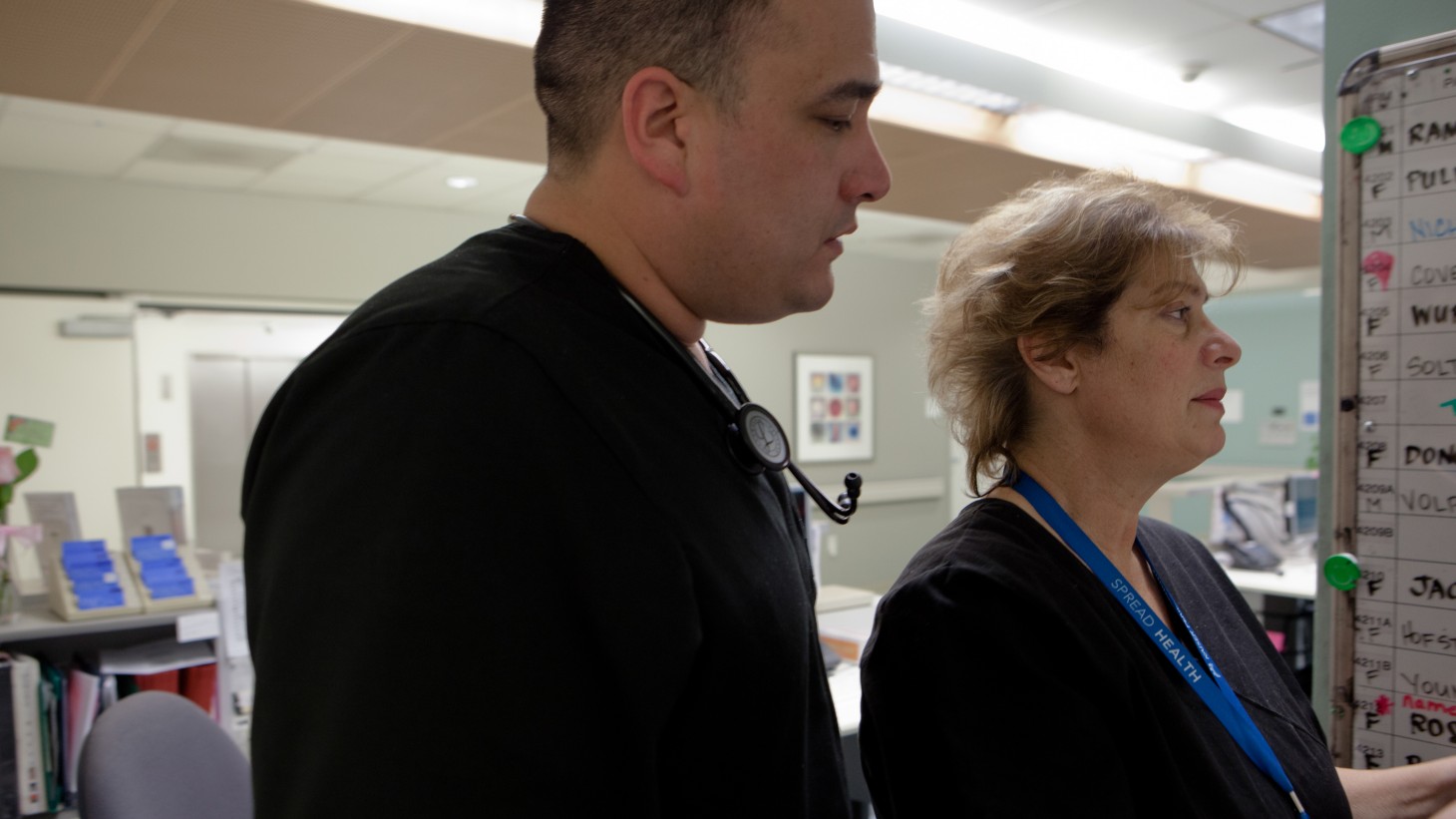AIDET by the Letters

Eric Zambrano, left, RN, UNAC/UHCP with Demetria Verna, ward clerk/transcriber, SEIU UHW
Spelling out patient service
It's a simple set of five letters, but it can pay big dividends when you're interacting with patients.
Let's spell it out and communicate our best.
Acknowledge—The first letter of the AIDET acronym reminds each staff member or care provider along the patient’s path to acknowledge his or her presence. Making eye contact with a patient or giving the member a smile is all that’s needed.
Introduce—When you identify yourself by name, you change the patient’s visit from an anonymous interaction into a personalized experience.
Duration—A little information goes a long way. Letting patients know how long a visit is expected to take lets them know their time is valued. If a doctor is running late or the lab is behind, letting patients know about the delay and keeping them updated shows respect.
Explanation—Whose body is it? No one likes it when a caregiver starts doing something without telling a patient what they’re doing and why.
Thank you—The last step wraps up the visit by thanking the patient for coming in or for providing the information needed to provide them with excellent care.
